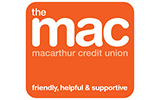What’s happening with variable rates in December 2025?
Variable rates are likely to stay put, with experts warning the RBA could keep the cash rate on hold for longer — and may even increase it in 2026 — after headline inflation jumped to 3.8% in the year to October.
While most variable rates remain in the mid-5% range, some lenders including Pacific Mortgage Group, in1bank and The Mac, are offering products in the low-5% range. Hume Bank and Geelong Bank are also promoting variable rates from 4.99% p.a. (comparison rate 5.29% p.a.). Promo rate is valid until 31 December 2025.
Money.com.au analysis shows the average interest rate on new variable loans has fallen by 0.76% over the past year, and by 0.82% for existing loans. Now is a good time to ask your lender for a sharper rate or consider switching, as new customers often receive more competitive deals than existing ones.
What is a variable rate home loan?
A variable home loan has an interest rate that can go up or down over the loan term — normally in line with changes to Australia’s official cash rate.
This means your mortgage repayments will be lower when interest rates drop but higher when interest rates go up. It’s different to a fixed rate home loan where the rate (and therefore your repayments) remain the same for a set period.
Most variable rate home loans allow you to make extra repayments on your mortgage to pay it off faster, and many come with extra features such as offset and redraw facilities.
According to the Reserve Bank of Australia (RBA), the majority of new owner-occupier loans in Australia (98.0%) are variable. Variable rates are available on owner-occupier and investment home loans.
The RBA Board meets eight times a year to review the cash rate. The cash rate is the interest banks and lenders pay on the money they borrow from other banks. It influences the interest rates paid by consumers, including on home loans and savings accounts.
How to save with a variable rate loan

Mansour Soltani, Money.com.au's Home Loans Expert
“Make extra repayments on your variable rate home loan when interest rates are low. When interest rates are lower, the principal component of your repayments is bigger, helping you smash down your loan faster. When interest rates are higher, it’s inverted, and the interest component of your repayments is bigger so your cents and dollars don’t stretch as far. However, we always recommend consistency as you never know which way interest rates will go.”
Mansour Soltani, Money.com.au's Home Loans Expert
What are the current variable mortgage rates?
- The lowest variable rate available right now is 4.99% p.a. (comparison rate 5.29% p.a.) with a Hume Bank/Geelong Bank home loan (Max LVR of 80%). Promo rate is valid until 31 December 2025.
- For investors, the best variable rate is 5.19% p.a. (comparison rate 5.23% p.a.) on a Northern Inland CU home loan (Max LVR of 80%).
- Based on the RBA’s Housing Lending Rates, the average variable home loan rate is: 5.51% p.a. for new loans.
The best variable rates will vary depending on the type of home loan you need (owner-occupier or investor) and your loan-to-value ratio (LVR). Lenders see LVRs lower than 80% as less risky because you’re borrowing less compared to the property's value. Lower LVRs typically mean lower rates, and higher LVRs mean higher rates.
That’s why it’s important to compare loans based on your situation, as the headline rates lenders advertise may not be what you actually qualify for based on your borrowing position.
More of the best variable home loan rates right now
Top variable rates for owner occupiers
| Loan | Interest rate | Comparison rate^ | Max LVR |
|---|---|---|---|
| Hume Bank Spring Forward | 4.99% | 5.21% | 60% |
| in1bank in1home | 5.08% | 5.13% | 50% |
| Gateway Bank Green Plus Home Loan | 5.10% | 5.40% | 80% |
| Pacific Mortgage Group Owner Occupied Variable Home Loan | 5.14% | 5.14% | 80% |
| People First Bank Basic Variable Home Loan | 5.14% | 5.15% | 70% |
| People's Choice Credit Union Basic Variable Home Loan | 5.14% | 5.15% | 70% |
| RACQ Bank Fair Dinkum Home Loan | 5.14% | 5.15% | 60% |
| RACQ Bank Fair Dinkum Home Loan | 5.14% | 5.15% | 60% |
| Heritage Bank Discount Variable OO P&I | 5.14% | 5.16% | 70% |
| Australian Mutual Bank GumLeaf Basic Variable Rate Owner Occupied | 5.14% | 5.21% | 60% |
Top variable rates for investors
| Loan | Interest rate | Comparison rate^ | Max LVR |
|---|---|---|---|
| Hume Bank Spring Forward | 4.99% | 5.33% | 60% |
| Northern Inland Credit Union Value Home Loan | 5.19% | 5.23% | 80% |
| Northern Inland Credit Union Value Home Loan | 5.19% | 5.23% | 80% |
| People First Bank Basic Variable Investment Loan | 5.29% | 5.30% | 70% |
| People's Choice Credit Union Basic Variable Home Loan | 5.29% | 5.30% | 70% |
| Heritage Bank Discount Variable Inv P&I | 5.29% | 5.31% | 70% |
| Unloan Refinance | 5.34% | 5.25% | 80% |
| Pacific Mortgage Group Investment Variable Home Loan | 5.34% | 5.34% | 80% |
| RACQ Bank Fair Dinkum Home Loan | 5.34% | 5.35% | 60% |
| Easy Street Variable Home Loan | 5.34% | 5.39% | 95% |
Types of variable home loans explained
Basic variable home loan
This is a no-frills variable home loan with limited features but a lower interest rate. For example, a basic home loan may have a discount of 0.10% p.a., compared to a lender’s other products with no offset account or redraw.
Best for: First home buyers who don’t yet have savings to park in an offset account and would benefit more from lower repayments than features they’re unlikely to use.
Introductory discount home loan
Comes with a discounted ‘honeymoon’ interest rate for a period of time (usually 1-3 years), and then reverts to a higher variable rate. It’s worth noting that the initial savings may be offset by the higher rate once the intro period ends.
Best for: Short-term minded borrowers who want to take advantage of lower repayments early on — and ideally plan to refinance or sell before the higher rate kicks in.
Standard variable home loan
The variable home loan lenders offer as standard with features likes offset and redraw. A lender’s standard variable rate is rarely its cheapest and is often the default interest rate once a borrower’s fixed-rate term expires.
Best for: Borrowers who want to put their savings to work in an offset account, with added features like a redraw facility and the ability to make extra repayments. Can be useful for homeowners looking to pay down their loan faster.
Package home loan
This combines your variable rate home loan with a transaction account and other financial products, like a credit card, in exchange for a discounted interest rate or reduced fees on each product.
Best for: Borrowers who plan to use other financial products — like a credit card or everyday transaction account — and want to save on fees or interest by bundling them with their home loan under one lender.
What about a split home loan?
A split home loan allows you to divide your loan into two portions — one with a variable rate and the other with a fixed rate. You can customise your split — whether it’s 50/50, 60/40, or 70/30, depending on your goals and risk appetite. According to our latest consumer survey, just 3% of Australian homeowners are considering a split loan this year.
Best for: Borrowers who want to manage the impact of interest rate rises through the fixed portion, while still offering the flexibility and features of a variable rate loan.
How to get the best out of a variable home loan (a broker’s top strategies)
Money.com.au’s Mortgage Expert, Debbie Hays, shares two common strategies that homeowners and investors are using to get more value from their variable rate loans.
Strategy 1: Go basic to get a lower variable rate
Homeowners looking for the lowest possible variable rate are increasingly opting for a basic home loan without an offset account. These loans typically offer a redraw facility instead, which serves a similar purpose by reducing the interest payable on the loan. Basic loans also generally come with no ongoing monthly fees — meaning you benefit from both a lower rate and fewer fees, while still minimising interest through the redraw feature.
Strategy 2: Split between P&I and interest-only with offset
Another strategy is to split your loan into two parts: one principal and interest (P&I) and one interest-only. By fully offsetting the interest-only portion with your savings, you avoid paying interest on that part — it frees up cash to focus on reducing the P&I portion faster. Debbie says this is a popular strategy among investors, particularly those without owner-occupied debt.
When should you choose a variable interest rate on your home loan?
Here are three scenarios where choosing a variable rate home loan could be suitable.
Rates are expected to drop in the near future
Opting for a variable rate home loan when there are predictions or indications that interest rates may decrease means you could benefit from lower repayments sooner, compared to if you were locked into a fixed-rate mortgage with hefty break costs to pay. Keep in mind that rate changes can be difficult to predict, and getting help from a mortgage broker is a good idea.
You want access to home loan features to pay your mortgage off faster
Variable rate home loans generally offer additional features such as an offset account and the ability to make extra repayments without penalty. These features can help you pay off your mortgage faster and reduce your interest payable over the life of the loan.
You want the option to refinance without incurring fees
Variable rate home loans typically offer more flexibility when it comes to refinancing. If you anticipate changes in your financial situation or want to take advantage of better loan terms in the future, having the option to refinance without incurring break fees can be attractive. This flexibility also allows you to take advantage of lower interest rates or better loan features if you spot a better deal elsewhere.
Are variable rates cheaper than fixed rates?
Based on Money.com.au’s analysis of Australia’s home loan market, the lowest rates available right now are generally fixed. This is likely due to lenders pricing their fixed-rate in anticipation of further rate drops in 2025. But if the major bank economists are to be believed, variable rates could drop soon and if you lock into a fixed rate, it may not remain the cheaper option over time.

Mansour Soltani, Money.com.au's Home Loans Expert
“One thing you can bet on is that the banks have already priced in which way they think the market is headed to their rates. They’re hoping borrowers will fix their rate purely based on wanting peace of mind. The best time to fix is when the market is not so volatile, and banks offer a great rate close to the variable. When the gap between fixed and variable rates is too large like it’s been in the past few years, I would choose a variable rate."
Mansour Soltani, Money.com.au's Home Loans Expert
How a rate change can impact your variable rate home loan repayments
| Interest rate | 6.00% | 5.75% |
|---|---|---|
Loan amount | $600,000 | $600,000 |
Loan term | 25 years | 25 years |
Monthly repayments | $3,866 | $3,778 (save $88) |
Interest paid over the life of the loan (if you remain on the same rate) | $559,743 | $532,392 (save $27,351) |
Variable rate home loan features
Offset account
An offset account is a transaction account linked to your home loan that offsets your home loan balance. You can have a 100% offset where every dollar in that account offsets what you owe on your mortgage and your interest. So, if you have a $600,000 mortgage and $20,000 in your offset account, you'll only be charged interest on $580,000. Alternatively, you can have a partial offset where only a percentage of your account balance offsets your loan balance.
Additional repayments
Most variable rate home loans allow you to make additional repayments without penalty fees. This flexibility helps you pay down your loan faster, saving you interest in the long term. The more you pay off early, the less interest you’ll pay over the life of the loan, which is especially important as some lenders now offer 40-year home loans, meaning you could otherwise be paying interest for an even longer period.
Redraw facility
Allows you to withdraw any additional repayments you've made on your home loan. It frees up cash and provides flexibility in managing finances. You can withdraw additional repayments for any reason, like medical emergencies, home renovations, paying for a holiday, or paying off other debts.
Flexible repayments
You have the flexibility to choose your preferred repayment frequency for your home loan, whether that’s weekly, fortnightly, or monthly, depending on what suits your budget and cash flow. You may also have the option to opt for interest-only repayments for a specified period. This can be useful if you're looking to lower your repayments in the short term, as you would only pay the interest component on the loan, not the principal.
Split loan
You can split your home loan into fixed and variable portions, balancing stability and flexibility. With this arrangement, a portion of your loan is locked in at a fixed interest rate, providing predictable repayments and protection against rate rises. The remaining portion is at a variable rate, giving you the potential to benefit from any future rate cuts and allowing more flexibility in making extra repayments.
Variable rate home loan pros & cons
Pros
- Your repayments decrease with rate cuts
- More freedom to make additional repayments and redraw
- Easier to refinance with no break fees
Cons
- Your repayments may increase if rates go up
- The unpredictability of variable rates can make it hard to budget
- There are no guarantees that lenders will pass on rate cuts in full on variable loans
How to compare variable home loans
Compare the advertised rate
The advertised rate is the lowest interest rate lenders offer and promote on particular products. It��’s a good starting point when assessing variable rate loans, but your actual rate may be different depending on your LVR and loan amount. A lower interest rate means lower repayments and less interest paid in total. Even a 0.10% difference in your rate could save you thousands of dollars on your home loan. Look for the best variable rates among as many lenders as possible, not just the big four banks.
Check the comparison rate too
The advertised interest rate doesn’t give you the full picture of your borrowing costs. Lenders must also show a comparison rate. This estimates the annual cost of a home loan — including fees and interest. It’s designed to offer a more accurate comparison across different lenders and products. However, the comparison rate is always calculated by lenders based on a $150,000 loan amount and a 25-year term which won’t be realistic for all borrower scenarios.
Consider home loan fees
Home loan fees can be the equivalent of up to 1% of your loan amount, so it’s important to consider how they will impact your bottom line. Most lenders charge standard fees to open and maintain your home loan account and additional fees like redraw fees, late payment fees, early termination fees, etc. You can often negotiate with your lender to waive some of these, or your mortgage broker can assist with this.
Choose the right home loan features for your needs
Choose a variable loan with features that will help you save interest on your home loan and pay it off faster. Look for a home loan with offset account, additional repayments option, and redraw facility to start with. These are the most commonly-used features, according to Mansour. Remember, some home loan features come with fees. Make sure to weigh up fees against the benefits the feature provides.



















